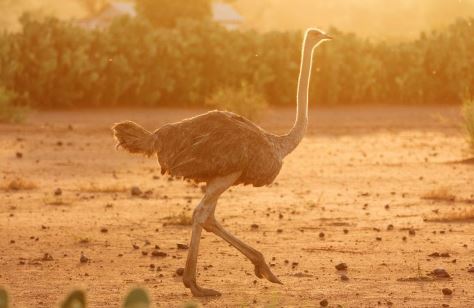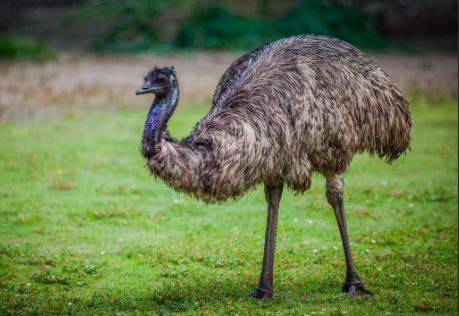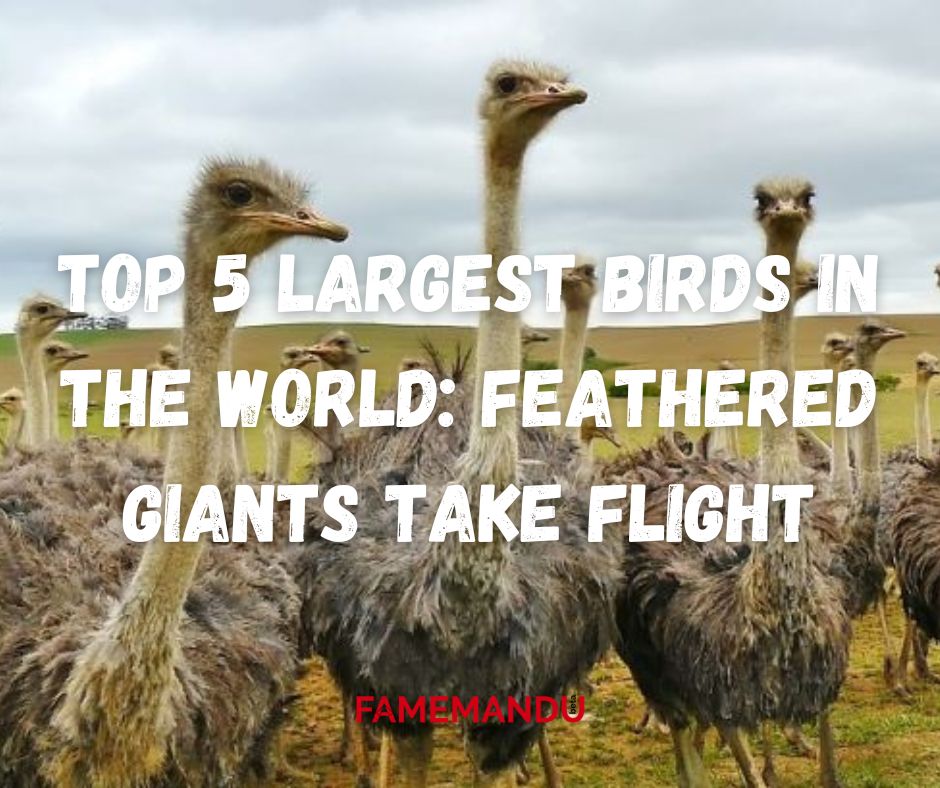1. Ostrich (up to 156.8 kg / 346 lb)
The largest and heaviest bird on Earth, the ostrich (Struthio camelus), can weigh as much as 156.8 kg (346 lb). These amazing modifications allow these flightless birds, which are native to Africa, to reach speeds of up to 72 mph (116 km/h), making them the fastest land animals. Large eyes and characteristic long necks help ostriches to be extremely observant of their environment. They have lightweight, compact bodies that are suited for quick mobility across a variety of terrains, despite their enormous size. Distinguished by their distinct plumage structure and coloring, males usually have stunning black and white plumage, while females have more subdued colors. As herbivores, ostriches mostly eat vegetation, seeds, and insects.

2. Somali ostrich (up to 130 kg / 287 lb)
One unique subspecies of ostrich, the Somali ostrich (Struthio molybdophanes), can weigh up to 130 kg (287 lb.). It is native to the Horn of Africa and lives in dry areas in Ethiopia, Somalia, and northern Kenya. The Somali ostrich, well-known for its adaptability, has a beautiful white plumage that contrasts with a pale blue-grey neck and legs. During mating displays, males frequently exhibit vivid pink and blue colors. The main foods that these herbivores eat are plants, seeds, and insects. Like other ostriches, they can run incredibly fast—up to 45 mph (72 km/h). Conservation initiatives strive to preserve the Somali ostrich and its distinctive qualities in its natural habitat, despite habitat degradation and hunting pressure.

3. Southern cassowary (up to 83 kg / 183 lb)
The Southern cassowary, or Casuarius casuarius, is a big, flightless bird that can weigh up to 83 kg (183 lb). It is native to the rainforests of northern Australia, New Guinea, and neighboring islands. It is distinguished by the characteristic casque, a helmet-like device on top of its head, and it may serve as a means of protection as well as communication. This magnificent bird features bright blue skin on its neck and a vivid blue hue on its face, along with brilliant blue and black plumage. It is regarded as one of the most dangerous birds in the world because of its strong legs and dagger-like claws on both feet. The cassowary is mostly a frugivore, but it also eats insects and small mammals. Notwithstanding its intimidating look, the Southern cassowary confronts difficulties in its conservation, such as habitat loss and collisions with vehicles in its declining range.

4. Northern cassowary (up to 70 kg / 154 lb)
Nestled in the tropical jungles of New Guinea and neighboring islands, the fearsome, flightless Northern cassowary (Casuarius unappendiculatus) can weigh up to 70 kg (154 lb). Easily identified by its vivid blue and black feathers, remarkable helmet-like casque, and bright blue neck and facial skin, the Northern cassowary has strong legs with a dagger-like claw on each foot. It doesn’t have the characteristic casque like its sister in the south. It is an omnivorous feeder, including small animals, fruits, and insects. Cassowaries are vital seed dispersers and play a major role in the ecosystem of forests. Conservation efforts seek to protect these distinctive and essential elements of the rainforest ecosystem, which are threatened by habitat loss, poaching, and the trade in exotic pets.

5. Emu (up to 60 kg / 99 lb.)
The second-largest bird in the world, the emu (Dromaius novaehollandiae), is indigenous to Australia and can weigh up to 60 kg (99 lb). Their long, strong legs, designed for running, and their silky, brown feathers are what define these birds without wings. Emus are recognized for their characteristic drumming cries and gregarious, sociable ways. Being omnivores by nature, they eat tiny vertebrates, fruits, seeds, and insects. Because they can disperse seeds across great distances, emus are essential in forming ecosystems. Males are in charge of incubating the eggs and tending to the chicks during the breeding season. Even though emus are a well-known symbol of Australia, they are threatened by changes in land use and habitat degradation, which calls for conservation initiatives.


